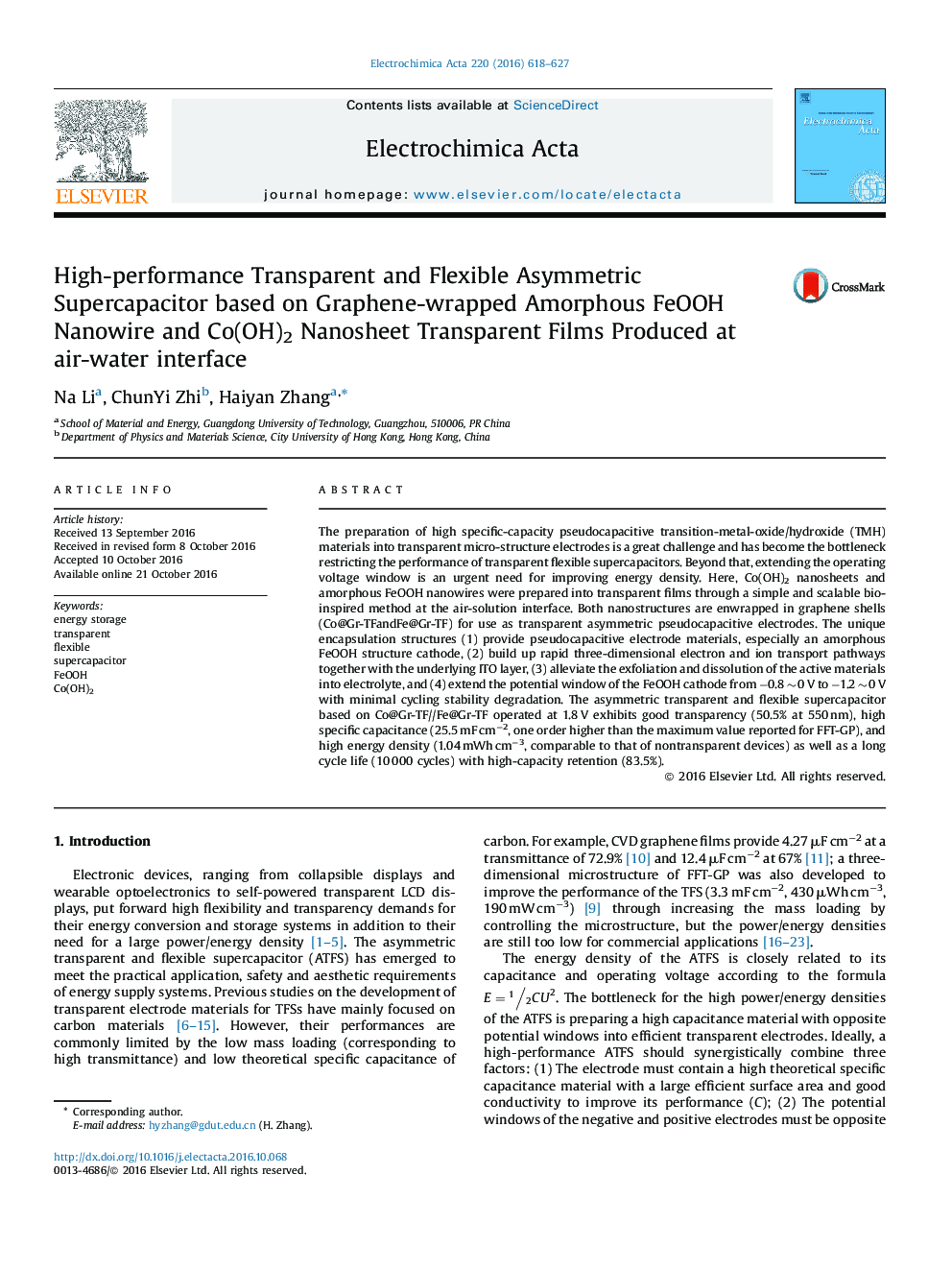| Article ID | Journal | Published Year | Pages | File Type |
|---|---|---|---|---|
| 6472453 | Electrochimica Acta | 2016 | 10 Pages |
Abstract
The preparation of high specific-capacity pseudocapacitive transition-metal-oxide/hydroxide (TMH) materials into transparent micro-structure electrodes is a great challenge and has become the bottleneck restricting the performance of transparent flexible supercapacitors. Beyond that, extending the operating voltage window is an urgent need for improving energy density. Here, Co(OH)2 nanosheets and amorphous FeOOH nanowires were prepared into transparent films through a simple and scalable bio-inspired method at the air-solution interface. Both nanostructures are enwrapped in graphene shells (Co@Gr-TFandFe@Gr-TF) for use as transparent asymmetric pseudocapacitive electrodes. The unique encapsulation structures (1) provide pseudocapacitive electrode materials, especially an amorphous FeOOH structure cathode, (2) build up rapid three-dimensional electron and ion transport pathways together with the underlying ITO layer, (3) alleviate the exfoliation and dissolution of the active materials into electrolyte, and (4) extend the potential window of the FeOOH cathode from â0.8 â¼Â 0 V to â1.2 â¼Â 0 V with minimal cycling stability degradation. The asymmetric transparent and flexible supercapacitor based on Co@Gr-TF//Fe@Gr-TF operated at 1.8 V exhibits good transparency (50.5% at 550 nm), high specific capacitance (25.5 mF cmâ2, one order higher than the maximum value reported for FFT-GP), and high energy density (1.04 mWh cmâ3, comparable to that of nontransparent devices) as well as a long cycle life (10 000 cycles) with high-capacity retention (83.5%).
Related Topics
Physical Sciences and Engineering
Chemical Engineering
Chemical Engineering (General)
Authors
Na Li, ChunYi Zhi, Haiyan Zhang,
